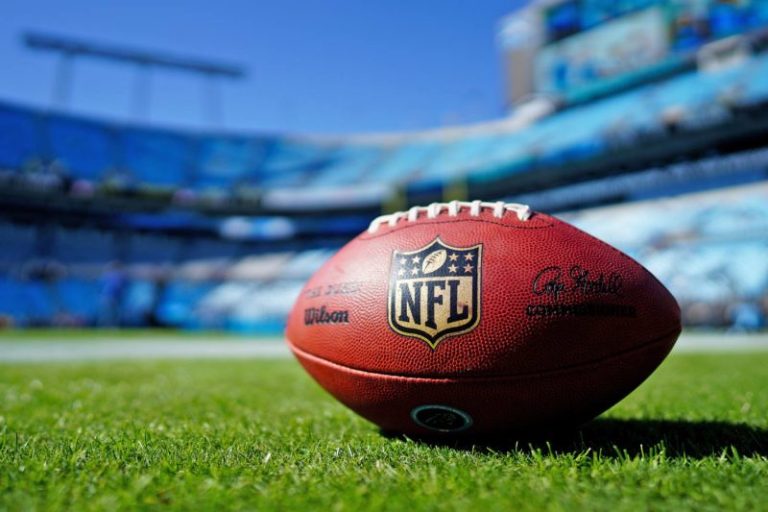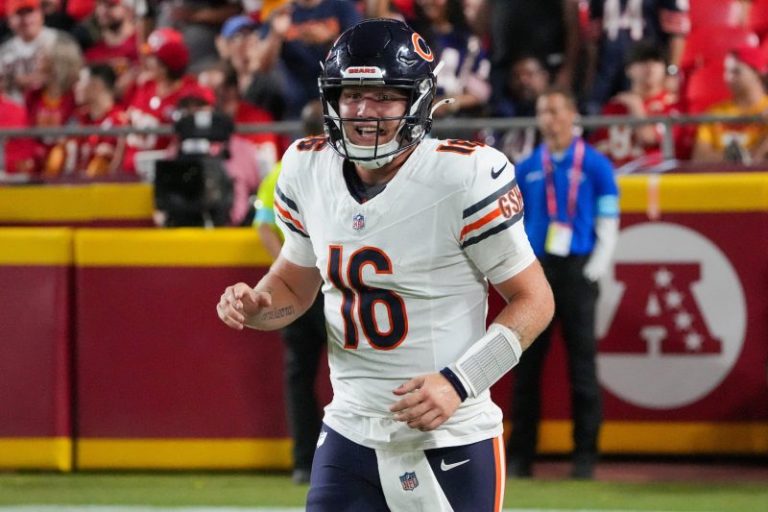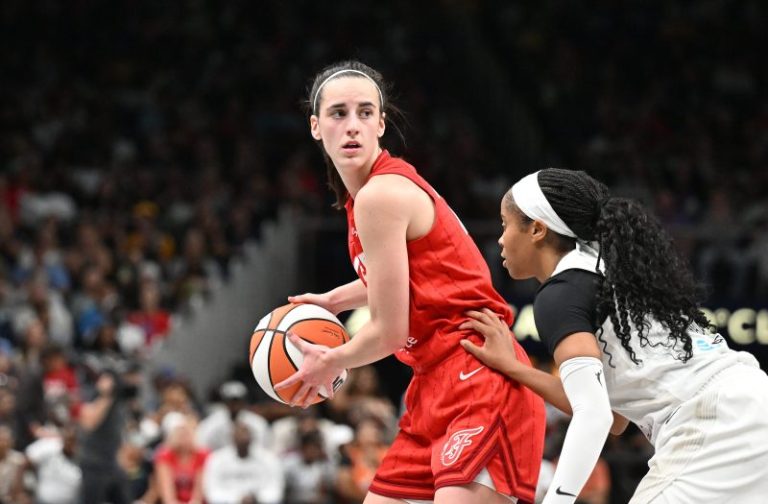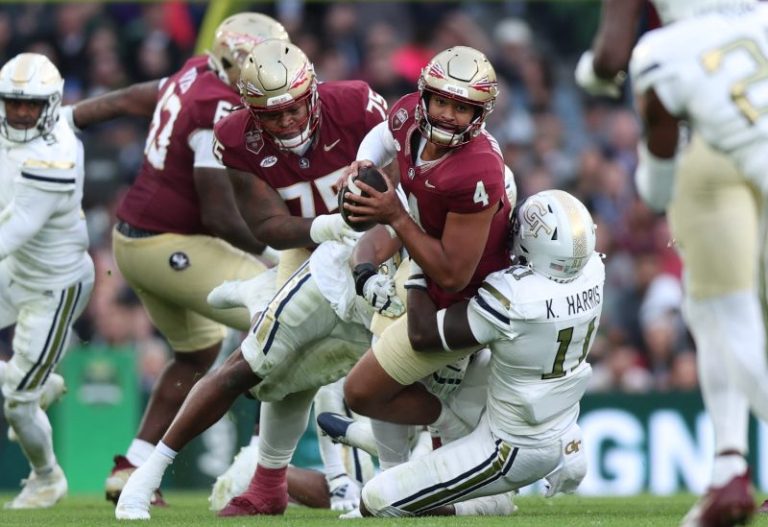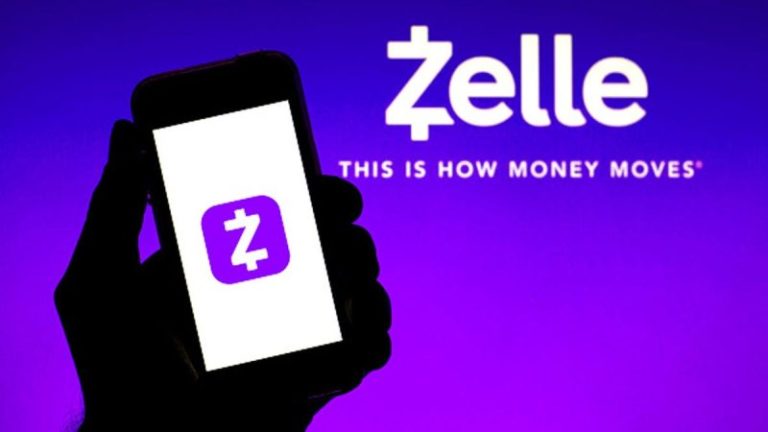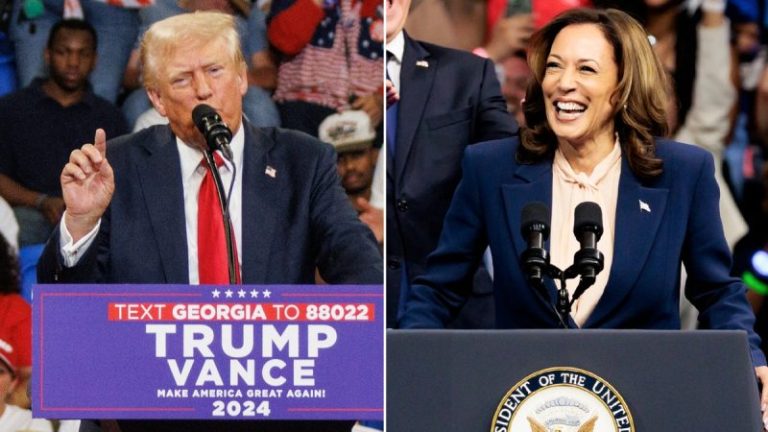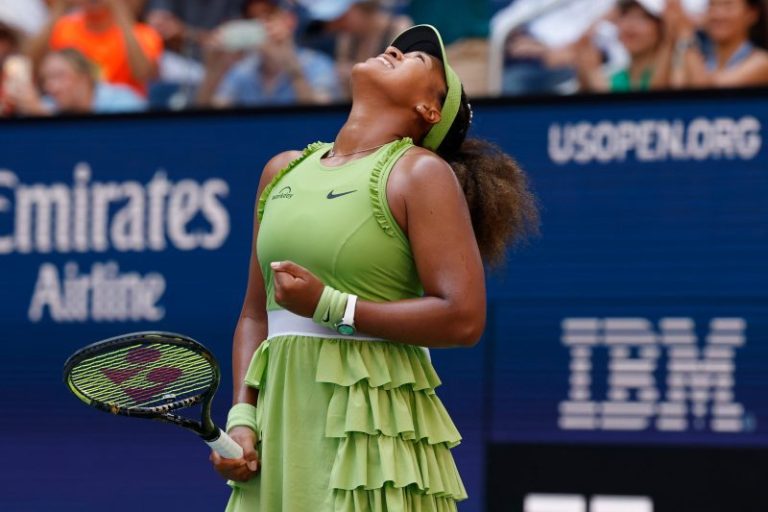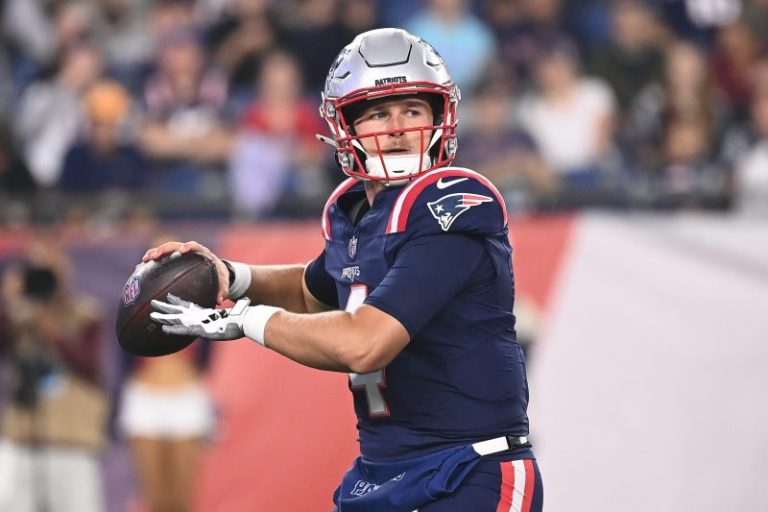Decision day has officially come and gone in the NFL.
By 4 p.m. ET on Tuesday, all 32 teams had to reduce their rosters to 53 players. The cutdown deadline surely prove painful for many throughout the league, as long-shot rookies and established veterans were dealt significant setbacks as they try to keep pushing for their football futures. But for others, the day might serve as the realization of a dream after they were included on an initial active roster.
Here’s a full rundown of many of the notable moves that were made throughout the day leading up to the deadline:
Broncos roster cuts: Tim Patrick, Samaje Perine both dropped
No trades materialized for the Denver Broncos leading into the roster cut deadline, leaving the team to cut wide receiver Tim Patrick and running back Samaje Perine outright.
NFL STATS CENTRAL: The latest NFL scores, schedules, odds, stats and more.
Patrick, 30, had been trying to make his way back after suffering season-ending injuries in each of the last two summers. Perine averaged 4.5 yards per carry and had 50 catches last season but was stuck behind Javonte Williams, Jaleel McLaughlin and rookie Audric Estime in the backfield.
Vikings roster cuts: Minnesota moves on from former first-rounder
Lewis Cine’s disappointing run with the Minnesota Vikings has come to an end.
The safety, who was a 2022 first-round pick out of Georgia, was waived by the team on Tuesday.
Cine suffered a fractured leg in his rookie campaign and logged just 10 defensive snaps in his first two seasons.
He is the second top pick from the Vikings’ 2022 NFL draft class to be sent out of Minnesota before the end of his rookie contract. The team traded second-round cornerback Andrew Booth Jr. to the Dallas Cowboys earlier in August in exchange for cornerback Nahshon Wright, who was also waived on Tuesday.
Packers roster cuts: RB AJ Dillon out for season
The most notable roster move for the Green Bay Packers on Tuesday might not have been a cut.
Running back AJ Dillon was placed on injured reserve with a neck injury, ending his season.
Dillon suffered a stinger during a joint practice with the Denver Broncos. Now, after re-signing with the Packers on a one-year deal in March, he will sit out all of 2024.
Third-round running back MarShawn Lloyd won’t start the season on injured reserve after recovering from a hamstring injury, however, and is positioned to help spell Josh Jacobs.
Cowboys roster cuts: Deuce Vaughn is safe
One of the most fascinating Day 3 figures from the 2023 NFL draft is staying with his team heading into his second season.
Running back Deuce Vaughn was not among the Dallas Cowboys’ cuts on Tuesday.
Vaughn, the 5-5 former Kansas State standout who is also the son of Cowboys assistant director of college scouting Chris Vaughn, will get a chance to make his mark in Dallas’ backfield after logging just 23 carries for 40 yards as a rookie.
Falcons roster cuts: Taylor Heinicke in, Kevin King out
The Atlanta Falcons won’t be shaking up their quarterback outlook any further for the time being, as the team is keeping Taylor Heinicke as the third-stringer behind Kirk Cousins and Michael Penix Jr.
Heinicke’s standing looked to be in question this summer after the arrivals of the veteran Cousins and No. 8 overall pick Penix, as he said in late July he ‘could kind of see the writing on the wall.’ But the seventh-year veteran will get a second season with Atlanta.
Not in the Falcons’ immediate plans, however, is cornerback Kevin King. The former second-round pick and Green Bay Packers starter was trying to make it back to the field for the first time since 2021, but the team opted to release him.
Chargers roster cuts: Tony Jefferson, Brenden Rice both make it through
Two of the more high-profile figures on the roster bubble for the Los Angeles Chargers have made it through to the initial 53-man group.
Veteran safety Tony Jefferson was not among the cuts Tuesday, setting him up to launch his comeback with Jim Harbaugh. The former Baltimore Ravens standout – who retired in 2023 and was a scouting intern for the organization – made a strong impression in his final preseason outing, recording two interceptions, a sack and a forced fumble against the Dallas Cowboys.
Seventh-round wide receiver Brenden Rice also is on the roster. The son of Hall of Famer Jerry Rice was trying to make a name for himself in camp after lasting longer than many expected in the draft.
“There’s always going to be pressure, no matter what, to play in the NFL,” Jerry Rice told USA TODAY Sports’ Jarrett Bell this summer. “But he tries to be himself and knows it’s not about what his dad did.”
Browns roster cuts: D’Onta Foreman out, 4 QBs make 53-man group – for now
The Cleveland Browns have gained some clarity in their backfield at the roster cut deadline.
Running back D’Onta Foreman is being cut, among multiple reports. Foreman was signed this offseason for additional depth as Nick Chubb continues to recover from his season-ending knee injury. With Chubb beginning the year on the physically unable to perform list and Foreman now out, the only two running backs on Cleveland’s active roster are Jerome Ford and Pierre Strong.
Meanwhile, the Browns are carrying four quarterbacks on their 53-man roster: Deshaun Watson, Dorian Thompson-Robinson, Jameis Winston and Tyler Huntley. The latter two could be candidates to be traded, Mary Kay Cabot of Cleveland.com reported.
Second-round rookie defensive tackle Mike Hall Jr. was officially placed on the commissioner’s exempt list after his arrest on a domestic violence charge.
Eagles move on from speedy receiver
After landing one dynamic slot target in Jahan Dotson, the Philadelphia Eagles are moving on from another.
The team is releasing wide receiver Parris Campbell, according to multiple reports.
Campbell had been considered the early front-runner for the No. 3 receiver job behind A.J. Brown and DeVonta Smith. But the receiver, who has struggled with injuries throughout his career, was sidelined by a groin injury in training camp. Then, the Eagles acquired Dotson, the Washington Commanders’ former first-round receiver.
Seahawks dropping former second-round pick
The Seattle Seahawks are releasing wide receiver Dee Eskridge, according to multiple reports.
Eskridge was a 2021 second-round selection out of Western Michigan. Injuries and a six-game personal conduct suspension last year, however, have resulted in him seldom seeing the field.
He made a late push for a roster spot with his 79-yard punt return for a touchdown in the preseason finale, but the Seahawks – operating under first-year coach Mike Macdonald and a new offense orchestrated by Ryan Grubb – opted to move on.
Rams trade team captain, key starter to Titans
In a year in which the Los Angeles Rams’ defense must replace all-time great defensive tackle Aaron Donald, more changes are still ahead.
The Rams are trading starting inside linebacker and team captain Ernest Jones IV to the Tennessee Titans, according to multiple reports. Los Angeles will receive a 2026 fifth-round pick while sending back a 2026 fifth-round pick, ESPN’s Adam Schefter reported.
Word first leaked Sunday about the Rams allowing Jones to seek a trade. The linebacker, however, said he had not requested a trade even as he entered the final year of his contract making just $3.16 million in base salary.
A third-round pick out of South Carolina in 2022, Jones became a key piece of the Rams’ defense, starting 33 games in the last three years.
In Tennessee, he’ll join a defense that has welcomed a number of notable acquisitions this offseason, including cornerbacks L’Jarius Sneed and Chidobe Awuzie as well as safeties Quandre Diggs and Jamal Adams.
Chiefs call it quits with Kadarius Toney
After a disappointing and error-filled 2023 campaign, Kadarius Toney’s time with the Kansas City Chiefs is over.
The team is waiving the wide receiver, NFL Media’s Ian Rapoport reported Tuesday.
After catching a touchdown and reeling off a 65-yard punt return in Super Bowl 57, Toney was expected to play a leading role in the Chiefs’ title repeat bid as part of a new-look receiving corps. But he played a central and infamous role in two of the team’s most prominent losses, as he earned ridicule for a series of drops in the opener against the Detroit Lions and then lined up offsides on a play that negated what would have been the go-ahead touchdown against the Buffalo Bills.
Toney was inactive for the team’s final seven games last season.
Though the Chiefs completed their Super Bowl repeat push, the team still pursued a significant shake-up at receiver this offseason. Marquise ‘Hollywood’ Brown was signed in free agency, while speedster Xavier Worthy was selected in the first round. The team also on Monday brought back JuJu Smith-Schuster, who spent one year with the New England Patriots after recording 78 catches and 933 receiving yards for Kansas City in 2022.
Justyn Ross is also out at receiver for the Chiefs.
Packers’ backup QB shuffle continues
After acquiring Malik Willis in a trade with the Tennessee Titans, the Green Bay Packers completed the reconfiguration of their quarterback room by waiving Sean Clifford and Michael Pratt on Tuesday, according to multiple reports.
Clifford, a fifth-round draft pick out of Penn State in 2023, served as Jordan Love’s backup last season. But the Packers opted to turn to Willis, a third-round pick out of Liberty in 2022, as their new No. 2. Pratt, a seventh-round rookie from Tulane, also will not make the active roster, though Green Bay could bring one of the two passers back on the practice squad.
QB Desmond Ridder out in Arizona
The Arizona Cardinals appear to have made their backup quarterback decision.
Clayton Tune is set to be the No. 2 behind Kyler Murray, as multiple reports indicate Desmond Ridder has been cut.
Ridder arrived in March after the Cardinals traded wide receiver Rondale Moore to the Atlanta Falcons to acquire the signal-caller, who started 13 games for the team last season before being benched for good. But after a training camp and preseason competition, it was Tune, the 2023 fifth-round pick out of Houston, who came out ahead.
Jaguars roster cuts: QB C.J. Beathard released
The Jacksonville Jaguars’ 53-man roster is now set.
The team made official its full set of cuts by Tuesday afternoon. Among the notable moves was the release of backup quarterback C.J. Beathard, who injured his groin in a preseason contest. With Mac Jones on board behind Trevor Lawrence, Beathard was unable to retain the No. 2 job he held in Jacksonville for the previous three seasons.
Panthers continue receiver shake-up by dropping Marshall
The Carolina Panthers’ remade receiving corps won’t include Terrace Marshall Jr.
The 2021 second-round pick out of LSU is being cut, according to multiple reports.
Marshall made his mark early in his career as a deep threat, averaging 17.5 yards per catch in 2022. But he struggled with drops and inconsistency amid the Panthers’ larger offensive issues last season and notched just 19 catches for 139 yards.
While first-year coach Dave Canales praised Marshall throughout training camp, the Panthers had most of their primary pass catchers in place after adding Diontae Johnson and first-round rookie Xavier Legette to a group that included Adam Thielen and 2023 second-round pick Jonathan Mingo.
Patriots send struggling kicker packing
The New England Patriots are moving on from Chad Ryland, releasing the kicker just one year after Bill Belichick selected him in the fourth round.
The Maryland product struggled mightily as a rookie, converting just 16 of his 25 field goal attempts. The kicking job now likely belongs to Joey Slye, who was signed in May by New England’s new regime.
Titans parting ways with former first-round pick
More changes are ahead for the Tennessee Titans, who are parting ways with cornerback Caleb Farley.
The Virginia Tech product was the No. 22 overall pick in 2021, but injuries limited him to just two starts in his first two seasons. He sat out all of 2023 after his house exploded, killing his father.
Titans general manager Ran Carthon has remade the team’s secondary this offseason, adding L’Jarius Sneed and Chidobe Awuzie at cornerback along with Quandre Diggs and Jamal Adams at safety.
Commanders nix WR Martavis Bryant’s comeback attempt
If Martavis Bryant is to earn his first NFL snaps since 2018, he’ll have to do so with a new team.
The Washington Commanders are releasing the wide receiver, according to multiple reports.
Bryant, 32, spent time on the Dallas Cowboys’ practice squad last season and was looking to become the latest player to follow Dan Quinn to his former rival team. Washington, however, decided to move forward with other options at receiver.
The 6-4, 210-pound Bryant showed promise early in his career with the Pittsburgh Steelers, recording 50 catches for 765 yards in 11 games during the 2015 season. He was suspended for the entire 2016 campaign for violating the league’s substance abuse policy, and he was suspended indefinitely in 2018. His ban was not lifted until last November.
Cowboys cut veteran pass rusher
The Dallas Cowboys got a look at Carl Lawson, but they won’t be starting the year off with the veteran pass rusher on the active roster.
The team is releasing Lawson, ESPN’s Todd Archer reported, just 12 days after they agreed to terms with him.
Lawson was brought on late in training camp to provide potential depth on the edge after defensive end Sam Williams, a 2022 second-round pick, suffered a torn ACL. Lawson appeared in just six games with the New York Jets last season but had seven sacks for the team in 2022.
He was one of a few summer additions along the defensive line, as Dallas also traded for Jordan Phillips and signed Linval Joseph to bolster the interior for new defensive coordinator Mike Zimmer.
Lions’ backup QB battle comes into focus
The Detroit Lions appear to have made up their minds about their initial backup quarterback outlook.
The team is releasing Nate Sudfeld, NFL Media’s Ian Rapoport reported, clearing the way for second-year passer Hendon Hooker to take the job behind starter Jared Goff.
Sudfeld served as Goff’s backup in 2022 but tore his ACL last August. Hooker, a third-round pick out of Tennessee, spent much of his rookie season recovering from the torn ACL he suffered late in his final college season. Now, however, he looks poised to be the No. 2.
Patriots move on from QB Bailey Zappe
The New England Patriots are still figuring out their quarterback picture for the start of the regular season, but Bailey Zappe won’t be part of it – at least on the active roster.
The team is waiving the third-year passer, according to multiple reports.
A fourth-round pick out of Western Kentucky in 2022, Zappe started eight games for the Patriots in the last two years. He was cut at last year’s deadline but later returned to the team and started six games in 2023, throwing for 1,272 yards with six touchdowns and nine interceptions.
A return to the active roster this season, however, is unlikely, with the team set to roll with veteran Jacoby Brissett, No. 3 overall pick Drake Maye and sixth-round developmental passer Joe Milton III.
Texans end trial run with former first-round pick
The Houston Texans are releasing cornerback C.J. Henderson, NBC Houston’s Aaron Wilson reported, ending the team’s experiment with the former first-rounder.
Henderson, who was the No. 9 overall pick in the 2020 NFL draft, signed a one-year deal with the Texans in March after spending the last two and a half seasons with the Carolina Panthers. Houston was looking for reinforcements behind Derek Stingley in the secondary, but the team looks poised to move forward with rookie Kamari Lassiter and potentially another former first-rounder in Jeff Okudah.
Slot cornerback Desmond King II was also released Tuesday, according to multiple reports.
Packers make change at kicker
Anders Carlson, a second-year player out of Auburn had a shaky rookie season and appears to have lost out on the battle with veteran Greg Joseph. Carlson, who missed a 32-yard field goal attempt in the last kick of the preseason, made 27 of 33 field goal attempts and 34 of 39 extra point attempts last season. ESPN was the first to report Carlson’s release.
More from Packersnews.com
Which notable players are candidates to be cut?
USA TODAY Sports took a look last week at several key figures on the chopping block. The latest names that could be headed elsewhere include:
Kadarius Toney, WR, Chiefs: His chances to stick with the two-time defending champs already looked iffy, and that was before Kansas City brought back JuJu Smith-Schuster on Monday.
Tim Patrick, WR, Broncos: A trade could be in order for a receiver-needy team, but Denver doesn’t plan to move forward with Patrick, per multiple reports, after he suffered two season-ending injuries in the last two summers.
Samaje Perine, RB, Broncos: Another possible player who could be dealt by Denver, Perine averaged 4.5 yards per carry and had 50 catches last season.
Which recognizable players have already been cut?
Jackson Carman, OT, Bengals: The 2021 second-round pick wasn’t able to stick as a backup after a shaky camp and preseason.
Mike White, QB, Dolphins: After apparently losing out to Skylar Thompson in the battle to be Tua Tagovailoa’s backup, White will now try to latch on with another team as a potential No. 2.
Matt Breida, RB, 49ers: Though he rushed for 1,902 yards in three years in his first go-around with the team, Breida’s second stint in the Bay Area was cut short after less than a month.
Keep an eye on quarterback movement
One trade of a triggerman has already happened since the preseason’s completion, the Tennessee Titans shipping Malik Willis to the Green Bay Packers on Monday. Willis leaves a logjam in Nashville and gets a fresh start and opportunity to be Jordan Love’s primary backup with the Pack.
Don’t be surprised to see similar moves Tuesday given the premium on quarterbacks but likelihood many clubs won’t carry more than two on their 53-man rosters. Veterans like the Atlanta Falcons’ Taylor Heinicke or Denver Broncos’ Zach Wilson are the kind of players who might fit the trade bill – veterans with experience but on expiring contracts and no concrete claim on the QB2 role in their current situations.
Prominent players involved in procedural transactions
Releasing, waiving or trading players aren’t the only means to winnow a roster down to 53 players. Quite a few others, many of them stars, will be retained in other categories that will (at least temporarily) exempt them from the 53-man roster. Here are some name players who won’t begin the year on active rosters:
PUP list: Patriots WR Kendrick Bourne (ACL), Dolphins OLB Bradley Chubb (ACL), Browns RB Nick Chubb (knee), Rams TE Tyler Higbee (knee), Vikings TE T.J. Hockenson (knee), Ravens RB Keaton Mitchell (knee), Chiefs DE Charles Omenihu (ACL), Dolphins OL Isaiah Wynn (quadriceps).
NFI list: Panthers RB Jonathon Brooks (knee).
All the NFL news, on and off the field. Sign up for USA TODAY’s Fourth and Monday newsletter.
When is the NFL’s deadline for roster cuts?
All rosters must be at 53 players by 4 p.m. ET on Tuesday.
What happens once the roster deadline passes?
NFL teams have until noon ET on Wednesday, Aug. 28, to claim players who are waived as part of league-wide roster reductions. Once those claims are resolved, clubs will begin filling out their practice squads.
How big are NFL practice squads
Expanded during the COVID-19 pandemic, teams are now allowed to carry up to 16 players on the practice squad, which supplements the 53-man roster. Up to 10 players with two or fewer accrued seasons can join a given practice squad while a maximum of six more with an unlimited amount of NFL service are also eligible for spots.
A 17th international player can be added if he meets certain eligibility requirements.
This post appeared first on USA TODAY


